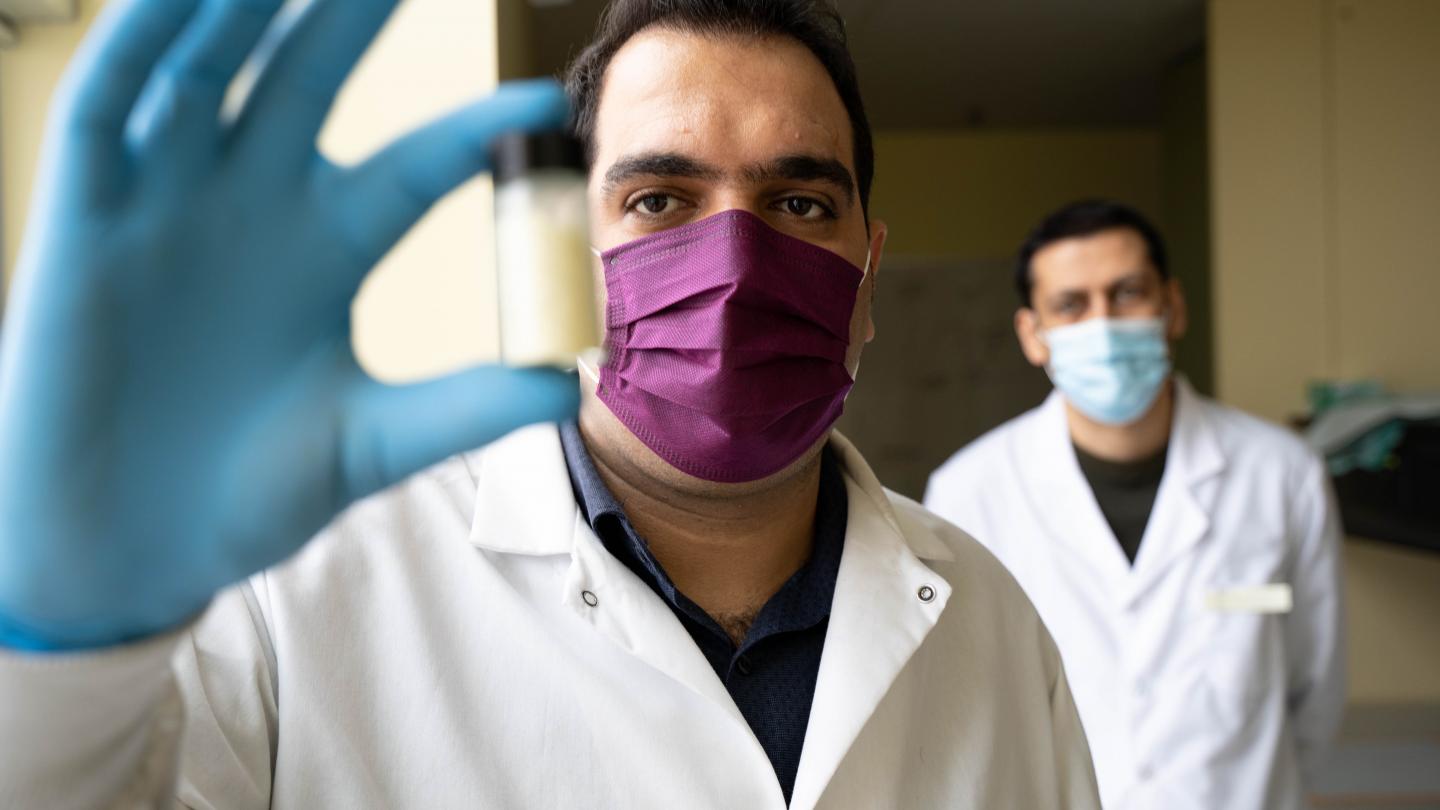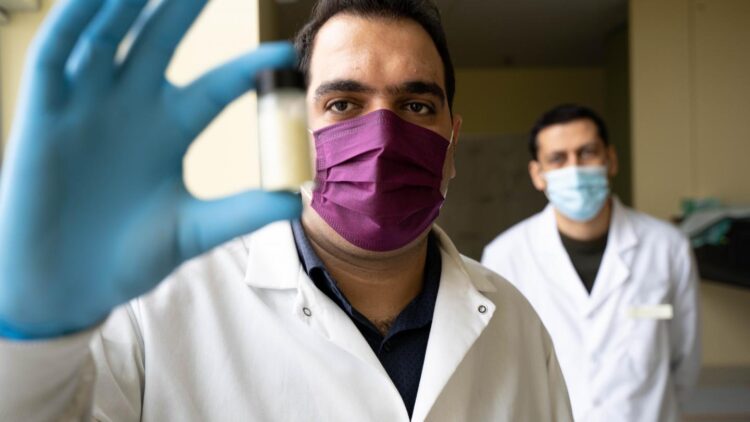UBCO researchers help protect people from toxic chemicals

Credit: UBCO
‘What goes in, must come out’ is a familiar refrain. It is especially pertinent to the challenges facing UBC researchers who are investigating methods to remove chemicals and pharmaceuticals from public water systems.
Cleaning products, organic dyes and pharmaceuticals are finding their ways into water bodies with wide-ranging negative implications to health and the environment, explains Dr. Mohammad Arjmand, an assistant professor of mechanical engineering at UBC Okanagan.
And while pharmaceuticals like a chemotherapy drug called methotrexate can be highly effective for patients, once the drugs vacate their bodies they become a high risk for human health and the environment.
“Methotrexate is an anti-cancer drug used at a high dose in chemotherapy to treat cancer, leukemia, psoriasis, rheumatoid arthritis and other inflammatory diseases,” he says. “However, the drug is not absorbed by the body and ends up in water channels from hospital waste, sewage and surface waters.”
Removing these types of contaminants from wastewater can be costly and complicated explains Arjmand, who is a Canada Research Chair in Advanced Materials and Polymer Engineering.
“We work on modifying the structure of adsorbent nanomaterials to control their ability to attract or repel chemicals,” says Arjmand.
While his team of researchers was looking at methods to remove the anti-cancer drugs from water supplies–they designed a porous nanomaterial, called a metal-organic framework (MOF), that is capable of adsorbing these pollutants from water.
Adsorption, he explains, takes place when the molecules of a chemical adhere to the surface of a solid substance–in this case, the chemotherapy drug sticks to the surface of the adsorbent which is Arjmand’s MOF.
“We precisely engineer the structure of our MOFs to remove the anti-cancer drug from aqueous solutions quickly,” says Dr. Farhad Ahmadijokani, a doctoral student in the Nanomaterials and Polymer Nanocomposites Laboratory directed by Arjmand.
Arjmand points out the MOF is an affordable technique for the removal of chemicals from liquids and waters and is an effective method to improve wastewater systems.
“The high-adsorption capacity, good recyclability and excellent structural stability make our MOF an impressive candidate for the removal of methotrexate from the aqueous solutions,” he adds. “Our research shows that particular pharmaceutical can be adsorbed rapidly and effectively onto our aluminum-based metal-organic framework.”
###
The research was conducted in collaboration with UBC, Sharif University of Technology and the pharmaceutical engineering department at the Soniya College of Pharmacy. It is published in the latest edition of the Journal of Environmental Management.
Media Contact
Wellborn, Patty
[email protected]
Original Source
https:/
Related Journal Article
http://dx.





